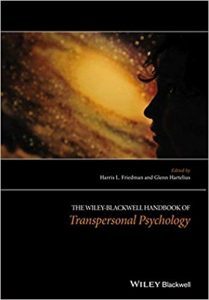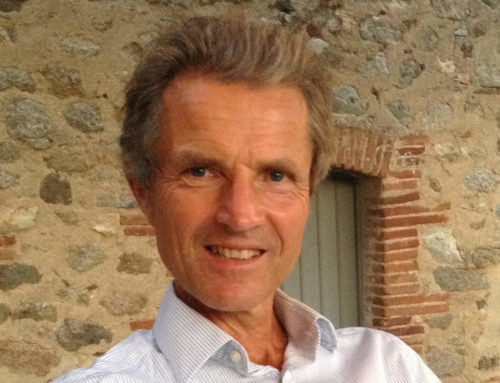Book review by David Lorimer
THE WILEY BLACKWELL HANDBOOK OF TRANSPERSONAL PSYCHOLOGY
Edited by Harris L. Friedman and Glenn Hartelius
Wiley Blackwell, 2015, 706 pp.
ISBN: 978-2-119-05029-2
In the last issue, I reviewed the Oxford Handbook of Psychology and Spirituality published in 2012 – this equally important Handbook was published a couple of years ago, and together they map the overall field very effectively as essential reading in the overall discipline of psychology, where the transpersonal approach has been neglected by the mainstream as inconsistent with its largely materialistic philosophical base. With over 50 authors and 38 chapters arranged in six parts, volume is as comprehensive as feasible – these are introduction to transpersonal psychology, transpersonal theory, transpersonal methodologies, transpersonal experiences, transpersonal approaches to transformation, healing and wellness, and transpersonal studies. Readers can dip into individual sections, while serious students will want to study the whole volume with its extensive references.
The first part helpfully defines the field with a summary definition in the initial chapter: ‘transpersonal psychology is a transformative psychology of the whole person with a diverse, interconnected and evolving world; it pays special attention to self-expansive states as well as to spiritual, mystical, and other exceptional human experiences that gain meaning in such a context. (p. 14) Another helpful definition defines the field of study as phenomena beyond the ego as a context for an integrative/holistic psychology that in turn provides a framework for understanding and cultivating human transformation. The reader will note the emphasis on transformation, which is entirely absent from mainstream psychology courses based on an analytical and statistical Cartesian objectivity.
Mike Daniels provides an informative overview of the roots, history and evolution of the transpersonal perspective, presenting his own model based on three vectors or metaphors of ascending, descending and extending, the last providing a social dimension. With my interest in metaphysical frames of reference and assumptions, I was drawn to the contribution by Harald Walach, who begins by stating bluntly that transpersonal psychology has had no structural impact on the mainstream. His own approach is to reinvent the transpersonal enterprise as a science and culture of consciousness, going back to William James and Franz Brentano. He provides a very useful characterisation of the third person mainstream approach, with an acute awareness of pervasive presuppositions (he goes back to RG Collingwood). He is fully aware of the problem of objectivism, and also of inner experience in relation to epistemology and indeed ontology. Resistance to expanding the materialistic frame is prevalent, he argues, because a paradigm and a theory is always stronger than data. His own proposal is a complementarist model of body mind interaction without arguing for the primacy of either consciousness or matter. This seems to me a promising approach.
The relationship of transpersonal psychology to the existing mainstream is a recurring theme within the volume, with some people, like the co-editor Harris Friedman, arguing that the only viable approach is empirical in terms of outer and inner senses. From this viewpoint, he is highly critical of the philosophical work of Wilber and Laszlo, which he sees as grand closed systems drawing on too many supernatural and metaphysical concepts. It is true that these are scientific-philosophical contributions, but at the same time they provide new frameworks within which scientific ideas can be analysed. Moreover, as he himself admits, science cannot be free of underpinning philosophical assumptions. For him, science is an empirical endeavour limited to the study of the physical and natural, namely the phenomenal.
This means that he treats non-duality as a metaphysical concept, and I’m not sure that meditation researchers would agree, as the whole point is to try to correlate inner experience with empirical measurement. He advocates abandoning the focus on transcendence as non-scientific, and while this reduces the scope of transpersonal psychology, he sees this as unavoidable if it is to remain scientific. In addition, he regards it as a necessity for conceptualisation to postulate a Cartesian split between knower and known, which is precisely disputed by Jorge Ferrer and others putting forward a participatory approach, also featured in this volume. Friedman regards his middle range transpersonal psychology theory is consistent with William James’s radical empiricism, which is the case that used epistemologically, although the deeper question is the relationship between epistemology and ontology – are there ontological realms beyond the physical? Many transpersonal psychologists, also in this volume, would answer in the affirmative.
For instance, Douglas MacDonald specifically addresses philosophical underpinnings of transpersonal psychology as a science, pointing out that the subscription science to naturalism/materialism, rationality and linguistic/semiotic representationalism tends to reduce transpersonal phenomena such as spiritual experiences to biological mechanisms ‘which simply do not conform or do justice to the real nature, quality, and significance of such phenomena’ (p. 318) Wilber puts his finger on the essential issue when he writes that ‘once you have translated the world into empirical measurements and numbers, you have a world without quality, guaranteed.’ Other writers advocate a mixed method approach involving both quantitative and qualitative data. Macdonald himself questions whether ontological materialism is in fact a requirement for science, as proposed by sceptics writing on what they call pseudoscience.
In a shortish review, it is impossible to convey the full richness and diversity of content in this volume, but it is worth spelling out some of the themes covered with great authority. There are contributions by Stan Grof on his 50 years of transpersonal research, as well as on altered states of consciousness by Charley Tart. Alan Vaughan writes about the relationship between Jung and transpersonal psychology, while Allan Combs described the contribution of Ken Wilber. Les Lancaster examines neuroscience and the transpersonal, while the methodological section includes neurophenomenology. Transpersonal experiences are also comprehensively analysed, including psychedelics, NDEs, transpersonal sexual experiences and parapsychology. The extensive section on transformation and healing addresses mental health, meditation, somatic therapies, hypnosis, dreaming, expressive arts therapies and psychospiritual integrative practices. The final part on transpersonal studies cover such areas as eco-psychology, feminist psychology, transpersonal social engagement, transpersonal medicine, the arts and transpersonal education. Each of these is a rich seam and every informed reader will find their own focus and point of expansion in this volume summarising the field, with extensive further reading.
Buy The Wiley Blackwell Handbook of Transpersonal Psychology here.
